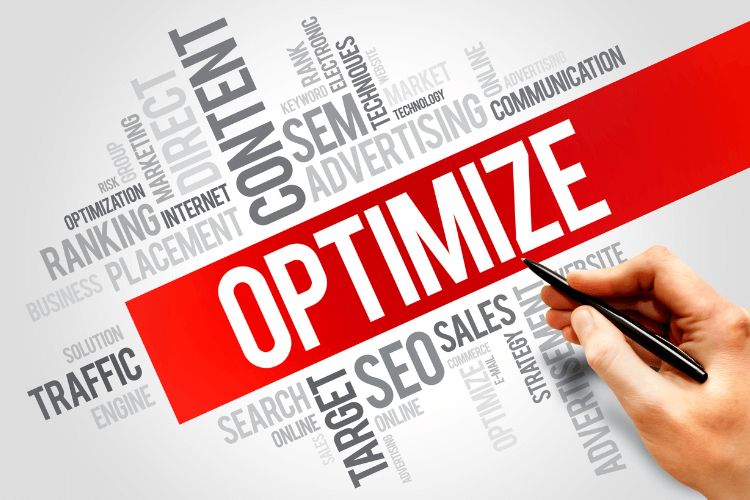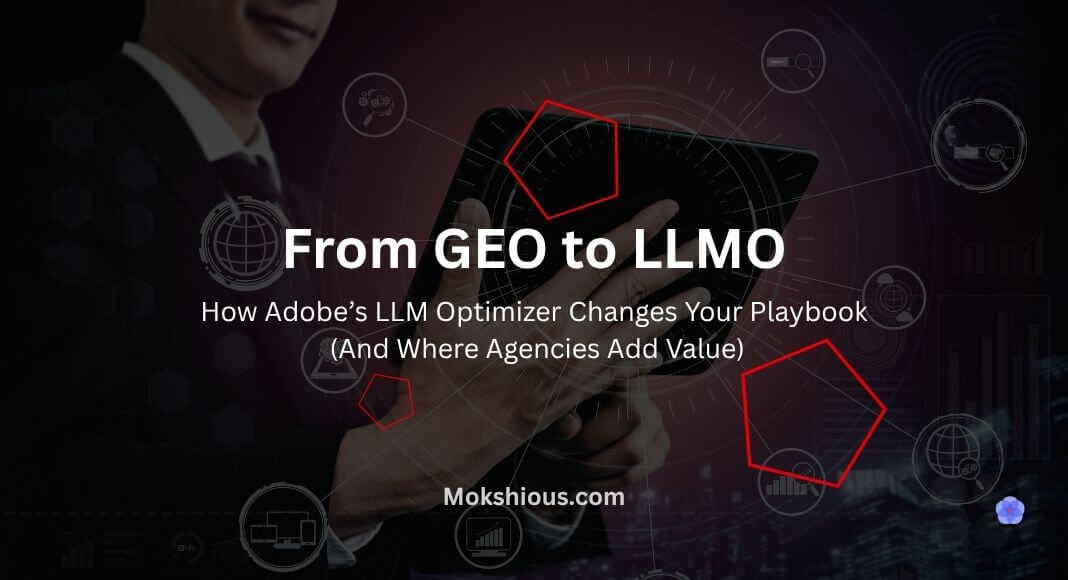The New Visibility Frontier: Why GEO Isn’t Enough in an LLM-First World

What is GEO? The Foundation of Traditional SEO Tactics
Generative engine optimization, or GEO, has long been the foundation of how we optimize content for search engines. Think structured data, schema markup, and snippets that make your pages eligible for Google’s featured boxes or voice assistant answers. It powers visibility in traditional search engine results.
For example, if you were a cybersecurity brand trying to rank for “EDR vs XDR,” you’d load your article with comparison tables, FAQs, and schema-enhanced summaries to win rich snippets.
But here’s the catch: GEO stops at the browser. And AI search is exploding beyond the browser.
LLMO: Optimization for Large Language Model Outputs
Large language model optimization, or LLMO, is a totally different beast. Instead of focusing on HTML structure, LLMO is about feeding AI models the right kind of context blocks and metadata so your brand gets cited when people ask AI chatbots like ChatGPT, Gemini, or Perplexity a question.
It’s not just about keywords anymore; it’s about generative AI optimization. It’s about being the most semantically trusted source in the model’s answer graph.
Picture this: GEO gives you blue links that enhance search results. LLMO earns you bold answers that enhance user intent. If GEO got you on the front page, LLMO gets you directly into the answer.
AI Search Engine Influence is Surging
In mid-2025, about 35% of all product and solution research begins inside LLMs. That means someone asking, “What is zero trust architecture?” may never see your website unless you show up in that first model-generated answer.
AI-generated overviews are replacing traditional search results in a big way. These answers don’t pull from Google rankings; they pull from trusted citations embedded inside the model’s training or real-time context memory.
If your brand isn’t mentioned, it doesn’t exist in that user’s world.
Adobe’s LLM Optimizer: What It Does (and Doesn’t) Do for You

Key Features of Adobe’s LLM Optimizer
Here are the standout features that make Adobe’s LLM Optimizer a powerful starting point for brands entering the LLM visibility game:
Adobe’s new LLM optimizer has created a buzz, and for good reason. It includes features like auto-context tagging, entity labeling, and one-click optimization that preps your content for LLMs. It’s great at identifying which parts of your site are already LLM-ready.
- Prompt monitoring dashboards to track prompt share and model influence are essential for effective AI SEO.
- Share-of-citation tracking to see how often your brand appears in AI-generated content and AI overviews.
- Brand authority scoring based on context weight and citation depth
- Real-time suggestions to optimize page structure for LLM readiness
- Content scoring based on LLM SEO and AI search friendliness
Benefits of Using Adobe’s LLM Optimizer
- Get ahead of competitors with faster deployment of LLM-ready content
- Discover which pages already qualify for AI optimization
- Align marketing and SEO with the future of Google’s search-generative experience.
- Build internal benchmarks for LLM visibility across departments
- Reduce dependency on trial and error by using guided model output checks
Adobe’s Blind Spots: What the Tool Can’t Solve Yet
Despite the hype, Adobe’s optimizer doesn’t do everything. It can’t run true competitor share-of-citation audits across platforms like ChatGPT or Gemini. There’s no real-time model response tracking.
It doesn’t handle context-block authorship at scale, nor does it solve your internal model context protocol governance needs across teams for effective AI SEO.
And it certainly doesn’t do model-specific tracking across Claude, GPT, or Mistral.
Critical Adobe Gaps That Agencies Like Mokshious Fill
This is where agency services for generative AI optimization step in. We build LLM-ready content workflows using feeds enriched with context blocks and schema variants tailored for specific AI platforms.
We also handle your model context protocol governance, setting up workflows for prompt testing, share-of-citation tracking, and citation monitoring. Our infrastructure includes RAG (retrieval augmented generation) memory injection, so your brand maintains context across sessions.
In short, Adobe gives you a platform. Mokshious gives you a full implementation partner.
GEO vs LLMO: A Strategic Comparison Framework for CMOs & SEO Leaders
Visual Table: GEO vs LLMO Breakdown
| Dimension | GEO (Generative Engine Optimization) | LLMO (Large Language Model Optimization) |
| Focus | Structured search engine results pages (SERPs), schema markup | Conversational outputs in LLMs like ChatGPT, Gemini, and Perplexity |
| Goal | Appear in search engine rankings and get user clicks by optimizing your content for AI SEO. | Be referenced or cited by LLMs when users ask questions or perform research |
| Tools | Schema.org, metadata, FAQ schema, Answer Engine markup (SGE), and SEO plugins are essential for LLM SEO. | Prompt scaffolds, MCP governance, context block authoring tools, RAG systems |
| Content Strategy | Keyword-rich blog posts, meta tags, and page load optimization are crucial for relevance. | Entity-based summaries, semantic context blocks, LLM-friendly FAQs |
| Metrics | Click-through rate (CTR), impressions, time on page | Share-of-citation, AI prompt inclusion rate, and LLM visibility across models are crucial metrics for good SEO. |
| SEO Output | Blue links and rich snippets in Google or Bing | Bold answer citations and inline brand references in AI-generated responses |
| Discovery Channel | Human-driven search intent via AI systems and search engine queries. | Model-generated answers to natural language queries |
| Optimization Cadence | Ongoing SEO updates with algorithm changes | Model testing cycles, multi-model prompt audits, structured content refreshes |
| Competitive Edge | Rank for keywords and dominate SERP features through AI systems. | Maintain model memory and citation authority across LLM ecosystems |
| Example Tools | Ahrefs, SurferSEO, SEMrush | Adobe LLM Optimizer, GPT Analyst, Perplexity dashboards |
When to Use GEO vs When LLMO is Critical
Use GEO when your goal is ranking product pages, buyer’s guides, or local SEO. But when you’re building thought leadership, supporting high-intent research, or trying to influence brand awareness via AI search engines, LLMO is key.
A well-balanced strategy will use both. But knowing where to lean in with authoritative strategies makes all the difference.
Why Agencies Matter More Than Ever in LLM Optimization

Top 5 LLMO Problems In-House Teams Struggle With
- You can’t see what ChatGPT actually says about your brand
- You have no tools to track competitor citations
- Your model context protocol is fragmented or non-existent
- Content teams don’t know how to write for generative AI optimization.
- LLM outputs change with each API update
How Agencies Solve This Faster
We bring scalable, tested optimization for generative AI frameworks. That includes building AI-optimized content libraries from scratch, setting up dashboards to monitor AI search visibility, and training models with context injections.
We also run model-specific testing across GPT-4o, Claude, Gemini, and Mistral to track keyword coverage and platform-specific results.
Sample Agency-Driven Workflow
- Run a baseline LLM search visibility audit using Adobe LLM Optimizer review tools
- Add structured context blocks with semantic enrichment
- Test citations in Gemini, Claude, and ChatGPT
- Launch content via ContentOps + AnalyticsOps sprint
- Refresh brand authority in AI search quarterly
How a SaaS Firm Increased LLM Visibility 3x

The Problem
A B2B SaaS client ranked on page one in Google for “zero trust architecture” but had zero LLM mentions in ChatGPT, Gemini, or Perplexity.
The Fix
We added structured data and AI-generated FAQs and built an LLM-ready content workflow for optimizing your content. Then, we tracked share-of-citation across AI systems.
The Result
The brand appeared in 3 out of 5 LLM results for target queries. AI search visibility grew 44% in 90 days, proving the value of optimization for search engines and AI.
Action Plan: Your Next 5 Moves to Transition from GEO to LLMO
- Run a GEO vs. LLMO strategy audit across all channels
- Track your share-of-citation across AI platforms like Gemini and ChatGPT
- Create a scalable model context protocol governance framework
- Build and test LLM-ready content workflows
- Partner with a trusted agency for full enterprise LLMO implementation
FAQs on LLMO, GEO, and Adobe’s Optimizer
Is GEO dead?
No. Traditional SEO signals still matter. But they won’t keep you visible in AI-powered search without effective SEO tools.
Can I use Adobe Optimizer without hiring an agency?
You can optimize your content. However, without a context-block strategy, prompt testing, and governance support, results will be limited.
How do I track our LLM share-of-citation?
Use AI search optimization consulting, platform tests, and model monitoring.
Will LLMO boost backlinks, too?
Absolutely. Being cited by AI increases trust and enhances your brand’s visibility in the context of AI SEO. And trust earns backlinks, digital PR, and organic visibility.
Conclusion: LLMO is the New SEO, But It’s Not a Solo Sport
The output of generative AI is the new frontier of visibility. Adobe’s optimizer is a great start, but it’s not the whole solution. To win, you need an agency that knows how to optimize for large language models, track keyword ranking across platforms, and build trust in every answer generated. GEO helped you win clicks through effective search engine optimization. LLMO will help you win conversations.
